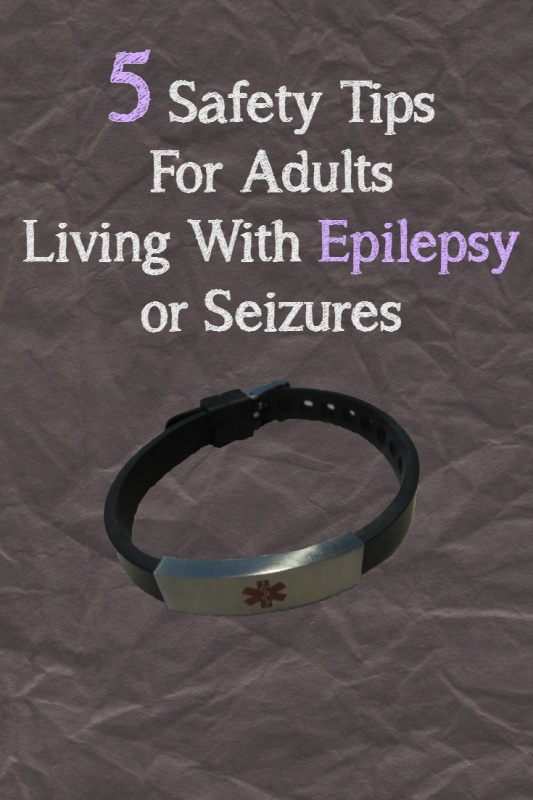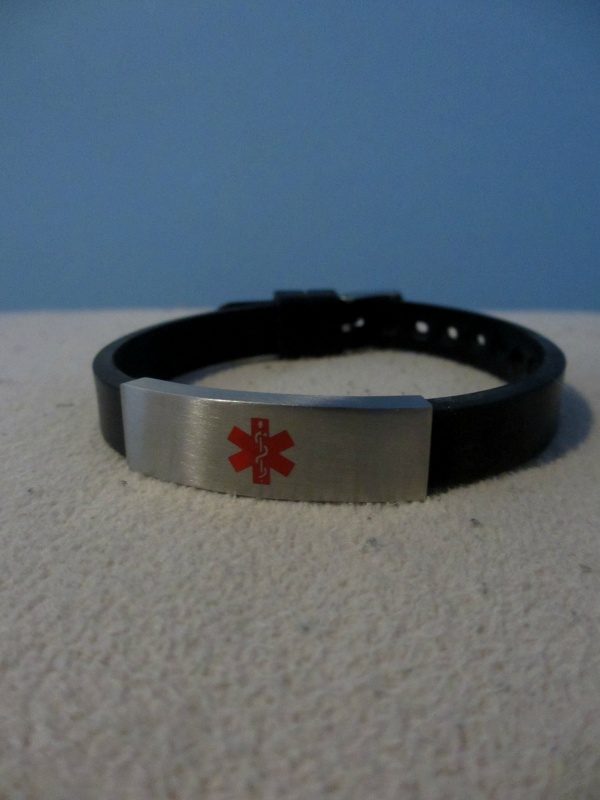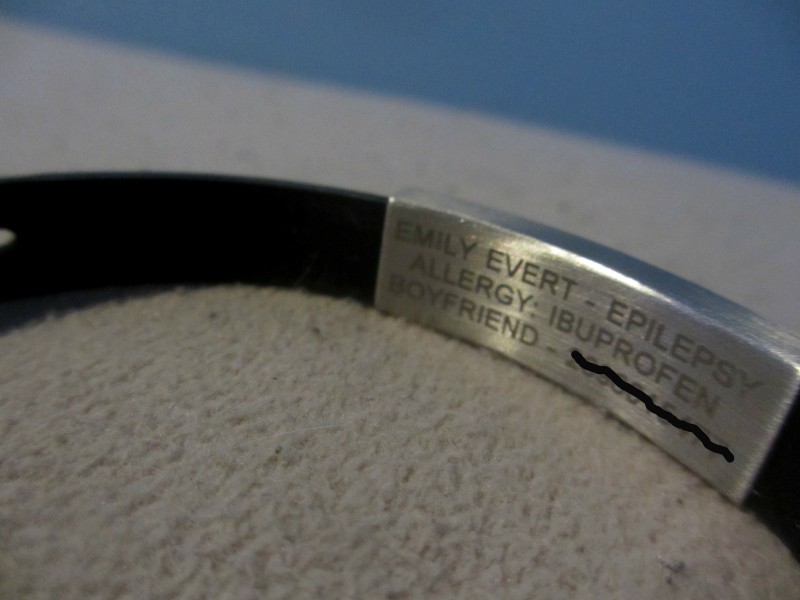
*I was provided with a medical ID bracelet from Hope Paige. All opinions are my own.
Back in October I had my first epileptic seizure. As a completely healthy 23-year-old, it was quite shocking. I had a second seizure just 3 days later. I have family members who have had seizures before, but I was still surprised at how strongly it affected my thinking and memory for several days afterwards. There are several safety factors to consider after having a seizure as well as safety factors to consider if you have epilepsy or are prone to seizures.
Safety tips For Living With Epilepsy or a seizure disorder.
1. See a neurologist. I have family members who lived with seizures for years and never saw a neurologist. Instead, their medication was managed by their family doctor. A neurologist will be more knowledgeable about seizures and seizure medications. I like my family doctor and feel that she genuinely cares about me, but my neurologist gave me a lot more information about seizures and requested that I have more testing done than my family doctor and the hospital did. I appreciate that he was interested in doing additional testing so we can be as informed about my brain as possible. The more information we learn about my brain and my specific situation, the better odds we will have of treating my seizures successfully.
2. Avoid being alone as often as possible. It’s possible for people to pass away from seizures – sometimes it’s caused by having a seizure while doing something dangerous like standing on a ladder, driving a car or swimming. Some people suffocate if they have a seizure while sleeping if their head/face is against a pillow, blankets or other surface. When others are near you, they can help make sure you receive first aid, call 9-1-1 if needed or simply turn you away from your pillow or other soft surface so you can breathe.
3. Make a seizure-plan with those who are around you regularly. If you often spend time along with a friend or sibling, make sure they know what you need or want them to do if you have a seizure in front of them.
4. Research and avoid seizure triggers. My neurologist told me about several including certain antibiotics, sleep deprivation, high levels of stress, energy drinks, etc. If you are given medication for any health concern, be sure to specifically ask if it is known to lower the seizure threshold. Even if a doctor knows you have a history of seizures, they may accidentally prescribe you a seizure-threshold lowering medication if you don’t remind them that you are prone to seizures.
5. Wear medical ID jewelry. Since having my first seizure, I have intentionally avoided being alone as much as possible. I sometimes run into a store while Ryan waits in the car, or go outside to check the mail by myself. Yet, having a medical ID bracelet from Hope Paige has given me added security. The bracelet is primarily rubber with a stainless steel buckle and plate. The materials can be worn in water so there is no need to remove it while showing or swimming. My bracelet has my name, diagnosis (epilepsy), allergy information and Ryan’s phone number. First responders are trained to look for medical ID jewelry. My bracelet gives me peace of mind for two reasons. I like knowing that if I were to have a seizure without Ryan around, he would be contacted so he could come find me. I also like knowing that if I had a seizure and an ambulance was called, the EMT’s would be informed that I have an allergy to ibuprofen. After both seizures I had intense headaches or migraines, so I worry that if I had a seizure again I may be given ibuprofen to address the headache. If I take ibuprofen, my lips swell up so I would then need to be given an antihistamine such as benadryl – which is problematic because antihistamines lower the seizure threshold. So, it’s nice to know that this chain of unfortunate events can be avoided by informing first responders of my allergy.
(I drew a black squiggle over the phone number for privacy).
Hope Paige has medical jewelry for children, men and women in a range of styles. Their prices are very reasonable – my bracelet was $21.95. Use the code EMILYREVIEWS when ordering to save 15% on your order!
Hi there! I am Emily Evert, the owner of Emily Reviews. I am 28 and live in a small town in Michigan with my boyfriend Ryan and our two pugs. I have a large family and I adore my nieces and nephews. I love reading memoirs, and learning about child development and psychology. I love watching The Game of Thrones, Teen Mom, Sister Wives and Veep. I like listening to Jason Isbell, John Prine, and other alt-country or Americana music. I created Emily Reviews as a creative outlet to share my life and the products that I love with others.
This post currently has 7 responses.
-
Great article and very informative. I am unable to be alone but my id medic bracelet makes me feel better. I am also receiving my new Embrace watch and it let’s my caregivers know that I having a tonic clonic seizure (grand mal). I am alone with my dog in the day. Lots of great epilepsy support apps out there like my epilepsy team. Very positive and hey guess what you are not alone EVER. You will be surprised to see how many people suffer from epilepsy and why this needs more funding and research. Xo
-
Thanks for the tip! I’ve had epilepsy since the age of 9 and have never had any type of ID bracelet for it. I may look into that! 🙂
-
I have a brother in law that suffers from seizures. I remember when he had his first one he was driving. It was such a scary situation. I agree with seeing a neurologist, it is not worth risking anything but professional service.
-
I have an ID necklace for my allergies and my renal transplant. My husband has had seizures since infancy (50+ years), but doesn’t wear an medical ID. However, we both have medical ID apps on our phones. It makes me feel better, but if the emergency people don’t know to look on my phone,they won’t know and may treat me with something that I might be allergic to.
-
Hi,
In emergency condition, having a MedicaL id bracelate with you which carriers information about your health condition could help the doctor treat you accordingly. I recently got the medical id bracelet and it is linked to an updateable online profile, where even more of your important information can be recorded. I liked it very much. -
Hi, I’m Prue and I’m 11 years old I’ve had epilepsy since I was 9 months old. My parents ordered me a medical ID bracelet for safety in case I have a seizure. It’s not here yet but it’s getting here in 2 days and I can’t wait!







This is a great post to alert people what to do for seizure care. As a nurse, I’m also trained to look for allergy bracelets. I’ve seen some great kid’s bracelets for allergies too.